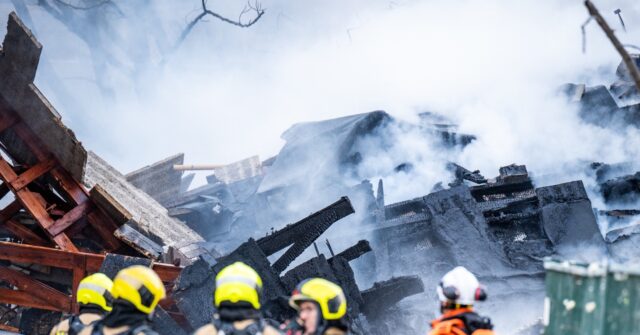On Saturday morning, a devastating explosion rocked The Hague, resulting in the partial collapse of a building and leaving multiple victims requiring hospitalization. As rescue workers continued their efforts throughout the day, the situation evolved, with tragic updates indicating the recovery of bodies from the site of the blast. By the evening, authorities confirmed that a fifth body had been found, heightening the somber atmosphere as the community grappled with the ramifications of the disaster. Hague Mayor Jan van Zanen provided updates throughout the day, advising residents that the search for victims would persist into the night while emphasizing that no official cause for the explosion had yet been determined.
During a meeting with local residents, Mayor Van Zanen addressed the palpable emotion surrounding the tragedy, particularly as families mourned the loss of friends and neighbors. He acknowledged the uncertainty that enveloped the community and assured residents that efforts were underway to clarify the situation as promptly and sensitively as possible. This ongoing emotional distress underscored the broader ramifications of the explosion on the local populace, as many grappled with the fear of potential further losses and awaited news of loved ones who were still unaccounted for.
As the search for victims progressed, grim updates continued to surface. Initial reports indicated that as many as 20 people were missing, prompting the mayor to prepare the public for “the darkest scenario.” The reality of the situation was underscored by the recovery of multiple bodies from the rubble, with officials acknowledging the likelihood that remaining missing persons may not have survived the blast. Amidst these challenges, a glimmer of hope emerged when rescue workers managed to locate a survivor beneath the debris roughly 12 hours post-explosion, although their condition remained unclear, highlighting the precarious nature of rescue operations in such catastrophic events.
In the immediate aftermath of the explosion, the investigation focused on potential leads regarding the cause of the blast, which authorities had yet to officially categorize as terror-related. Witness accounts and evidence from the scene were critical in piecing together details of the incident, specifically a car observed speeding away from the vicinity at the time of the explosion. Police appealed to the public for any information or footage that could assist in determining the circumstances surrounding the explosion, further emphasizing the collaborative effort necessary for effective crisis response.
As the city and the nation processed the impact of the blast, messages of empathy and solidarity poured in from various quarters. King Willem-Alexander and Queen Máxima conveyed their condolences to those affected by the explosion, extending sympathies to the families of victims and appreciation for the emergency services engaged in the rescue efforts. Similarly, political leaders, including populist figure Geert Wilders, expressed their shock at the events and committed their thoughts to the victims, underscoring the resolve of the community to come together in support of those impacted.
The situation surrounding the explosion in The Hague remains fluid, with ongoing developments expected as rescue operations continue and investigations progress. The response efforts illustrate not only the tragedies that affect communities but also their resilience in facing adversity. As search and recovery efforts persist, the thoughts and hopes of those in The Hague and the broader Netherlands remain firmly with the victims and their families, as they navigate the uncertainty and sorrow stemming from this tragic event.

